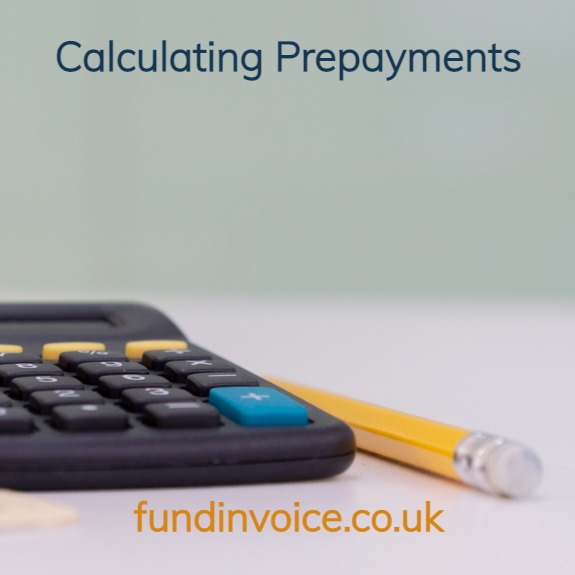- 19 Jan
How Do You Calculate Your Prepayments And Availability
If you are using receivables financing, such as factoring or invoice discounting, it can be difficult to understand how to calculate your prepayments and availability. Below we have set out a generic calculation, but please not that it may vary between invoice finance companies. We have used examples to explain.
If you have a particular problem with any element of the funding formula used by your invoice finance company, note that other funders may be prepared to take a different view. We have helped many companies access increased funding levels.
How To Calculate Your Prepayment Availability

Prepayments are the advances that an invoice finance company give you against your invoices i.e. the funding.
Availability is the amount of funds that are available for you to draw down from your funder. This will be the balance of the prepayments that are due, less the amount of funds that are already in use (often called the current account).
Funds in use, or your current account, refers to the combined total of all the prepayments you have drawn and any charges levied on your account - this is the amount you owe the funder at any given time.
The Calculation Of Prepayments
Your offer letter or agreement should specify the prepayment percentage that is being applied. For example, this could be 85% of the invoice value. So an invoice for £100 should generate £85 of funding (before deductions). A sales ledger of £100,000 of approved invoices could generate £85,000 (before deductions).
The balance of the invoice values becomes available to the client when the debtor pays.
In some cases e.g. car body repairs, the funder purchases the debt outright, at a 100% funding percentage, less charges.
Below are some of the deductions that may be applied.
Invoice Exclusions Or Disapprovals
Some invoices are either excluded from the facility e.g. cash sale proforma invoices, or they may be disapproved e.g. specified classes of transaction e.g. sales of a particular type, to a particular debtor or say contra accounts.
Debts beyond a certain specified age may also be ineligible for funding - the point at which they become ineligible differs between funders.
The rest of the invoices are approved, also called approvable.
Related Content - See this case study about Increasing Funding Levels From Invoice Discounting.
Debtor Limits
Many funders write credit limits (also called funding limits) on debtors, only invoices up to the value of the limit may be eligible for funding. Some don't use debtor limits, they just fund the approvable debts.
Prime Debtor Restriction
A prime debtor restriction is commonly set (although not in all cases) that restricts the amount of funding against one or more significant debtors. There is a detailed explanation of how prime debtor restrictions work in our guide: How Does Factoring Work?
Other Reserves
All manner of other types of reserve are possible, these are deducted from your availability. These could be set amounts or percentages. They could be for all sorts of reasons e.g. a general reserve of a set value due to reconciliation discrepancies, or a reserve in respect of potential contra account offset.
Facility Limit Or Payment Ceiling
There may be a facility limit, also called a payment ceiling in some cases. This is the maximum value that the current account is allowed to reach at any given time. Most funders are flexible about increasing this limit, but it may be enforced to control their risk.
So the total prepayment value may be £100,000. If you already have drawn say £80,000 (the funds in use or FIU amount - also called your current account in some cases), then £20,000 will be your availability, referred to as "available".
More Help With Calculating Prepayments & Availability?
This article should have explained how you calculate prepayments and availability. However, if you have more questions or need comparative quotes please contact us on 03330 113622.
- Home
- Business Financing
- Invoice Finance
- Invoice Discounting
- Factoring
- Debt Factoring
- Recourse Factoring
- Fund Selected Invoices
- Business Loans
- Construction Sector Funding
- Protect Against Bad Debts
- Exports Collection And Funding
- Import Funding
- Body Shop Funding
- Spot Factoring
- Retail Sector Funding
- Fund Invoices Confidentially
- Help Running Your Payroll
- CHOCs Customer Handles Own Collections
- Collect Invoices Confidentially And Funding
- Outsourcing Your Credit Control
- Asset Finance And Mortgages
- Case Studies
- About Us
- Testimonials
- Find Out More
- News
- Free Magazine
- Blog






